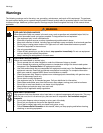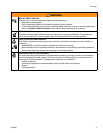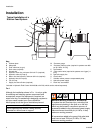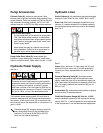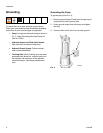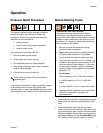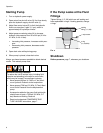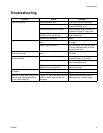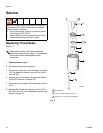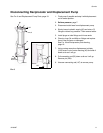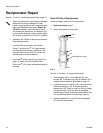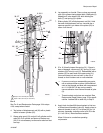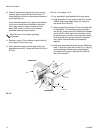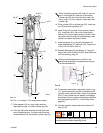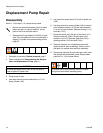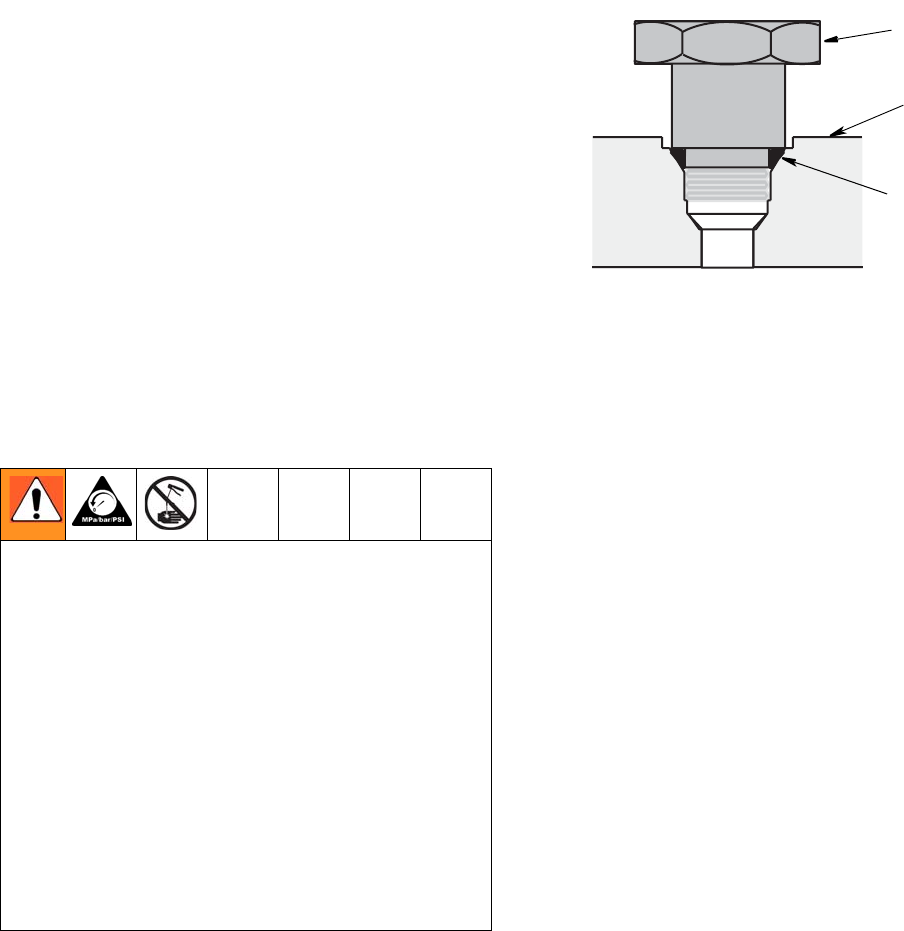
Operation
8 312350E
Starting Pump
1. Turn on hydraulic power supply.
2. Open return line shut-off valve (H) first, then slowly
open the hydraulic supply shut-off valve (L).
3. Adjust flow control valve (Q) to limit the hydraulic
flow to no more than 3 gpm (11 lpm), which is
approximately 60 cycles per minute.
4. Adjust pressure reducing valve (N) to increase
hydraulic inlet pressure from 50 to 600 psi (0.34 to
4.1 MPa, 3.4 to 41 bar).
• Increasing inlet pressure, increases outlet pres-
sure.
• Decreasing inlet pressure, decreases outlet
pressure.
5. Open drain valve while priming pump.
6. When pump is primed, close drain valve.
Always use lowest pressure possible to obtain desired
results. This reduces pump wear.
If the Pump Leaks at the Fluid
Fittings
Tighten fittings (1, 5, 60) which are self-sealing and
have replaceable o-rings. If leaking persists, change
o-rings.
F
IG. 4
Shutdown
Relieve pressure, page 7, whenever you shutdown.
Maximum Working Pressures
To reduce the risk of serious injury, including fluid
injection and splashing in the eyes or on the skin,
which may be caused if a component ruptures:
• Never exceed 600 psi (4.1 MPa, 41 bar) Maxi-
mum Hydraulic Pressure to the reciprocator.
• Never exceed 7500 psi (51 MPa, 517 bar) Maxi-
mum Outlet Pressure from the displacement
pump.
• Accessories added to the pump fluid outlet side
should have at least a 7500 psi (51 MPa, 517
bar) Maximum Working Pressure.
• Read and understand COMPONENT RUP-
TURE HAZARD instructions, page 7.
sealing
fitting (1, 5, 60)
reciprocator
o-ring
(1a, 5a,60a)
ti04478




